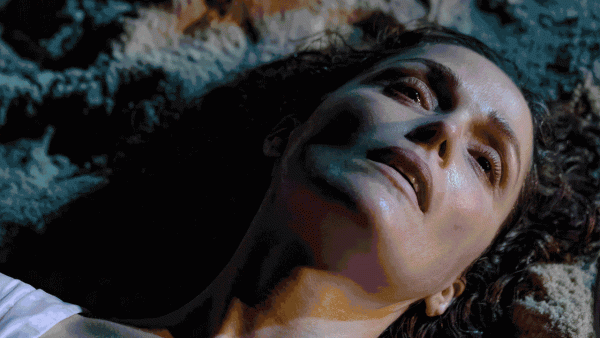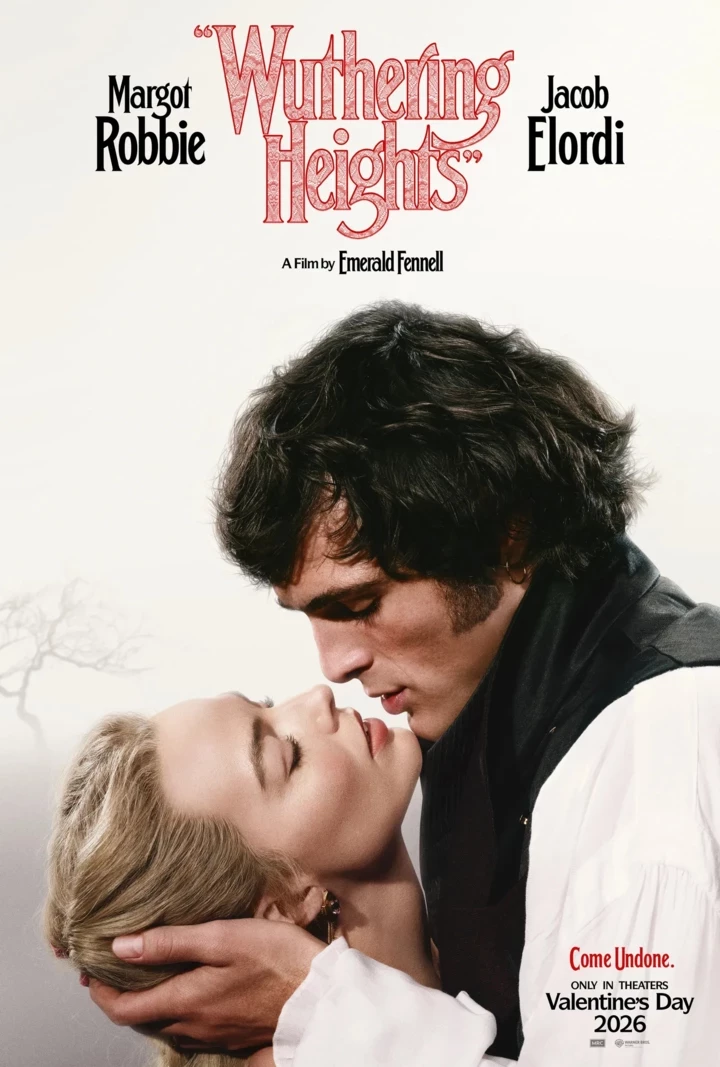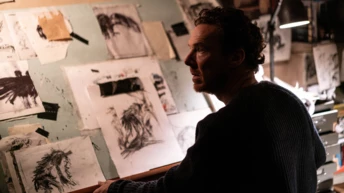
Save this storySave this storySave this storySave this story
The New York Film Festival, the keystone of the city’s cinematic calendar, finds itself a casualty of its own popularity. A substantial portion of its most distinguished films are slated for theatrical release in the near future—a fact that warrants celebration, considering they will be viewed by a wider audience at a lower cost and will eventually be accessible on streaming platforms, reaching areas where independent cinemas are scarce. However, this situation imbues the festival screenings with the aura of an advance preview rather than an irreplaceable experience. Despite this, the event consistently transforms Lincoln Center into a hub of cinematic fervor, and the eager anticipation that draws viewers through the doors fosters a sense of shared communion at the temple of film.
My colleague Anthony Lane’s recent piece on the craft and scholarship of film preservation serves as a timely reminder to appreciate the N.Y.F.F.’s robust Revivals section, brimming with significant new restorations, including one—Erich von Stroheim’s “Queen Kelly,” from 1929—that carries a potent dose of acrimony both in its thematic content and its production history. Stroheim’s acerbic perspective, situated amidst the grandeur and excess of an imaginary Middle European realm, explores ruthless intersections of sexuality and authority among both the ruling class and the subjugated. The film’s protagonist, Gloria Swanson, portrays an orphaned novice nun who, during a convent excursion, captures the attention of a charmingly flirtatious prince (Walter Byron), who is also the kept man and prospective spouse of the kingdom’s intensely envious queen (Seena Owen). The narrative escalates to violence, leading to banishment and humiliation in the kingdom’s African colony. Stroheim’s exacting and profusely realistic approach prompted the movie’s producer, the influential and authoritarian Joseph Kennedy, to terminate the project, effectively ending Stroheim’s career as a filmmaker. The preserved version, enriched with additional footage, validates the film as a magnificent, obsessively ornamental, yet emotionally shattering masterpiece of erotic elations and dread.
Contemporary cinema employs entirely different methods to depict the stifling rigidity of Old World society, including intimate documentary filmmaking, as exemplified by Nathan Silver’s “Carol & Joy,” which is featured in the festival’s New York Shorts program. The subjects are the actress Carol Kane and her mother—and Upper West Side housemate—Joy Kane, who is ninety-eight years old and brimming with remarkable anecdotes. Joy spent her formative years in Cleveland, where her father practiced as a psychiatrist. (Her forebears were, in her words, from “the shtetl”; her mother hailed from Austria.) She was reared, she elucidates, according to restrictive conventions that stifled her freely creative spirit, which she unsuccessfully endeavored to defy. Joy recounts a past marked by frigid discipline, threats, affronts, and deceptions, which required decades to overcome. Her subsequent accomplishments as a musician are accentuated in the film, alongside her incisive reflections on the ethos of liberation that underpins the artistic drive.
Standard family pressures are commonplace across cultural boundaries, and the South Korean director Hong Sangsoo vividly highlights them in “What Does That Nature Say to You,” a narrative of nascent romance subjected to intense parental investigation. The plot commences with a chance encounter rooted in deliberate design. A poet in his thirties escorts his girlfriend to her parents’ home—whom he has never encountered, despite a three-year relationship—and, in the driveway, serendipitously meets her father. The two men establish a rapport, the poet receives an invitation to dinner, and the inevitable questioning ensues. Unfortunately, the young man’s father is wealthy and renowned, a subject that the prospective in-laws cannot disregard. Amid the alcohol-induced conviviality of the gathering, inquiries concerning financial prospects and artistic aspirations are introduced—and reiterated incessantly, reaching a feverish intensity. Hong, with tenacity and masterful art-house elegance, captures the disastrous dinner in visuals of exquisite, precarious tension.
Mary Bronstein’s second feature, “If I Had Legs I’d Kick You” (a standout première at Sundance earlier this year), akin to “Carol & Joy,” also explores a mother-daughter relationship—within a psychotherapeutic context. Rose Byrne stars as Linda, a therapist whose young daughter suffers from a chronic ailment and whose husband, a sea captain, is frequently away, leaving her to navigate their child’s medical and emotional challenges single-handedly. These obligations are disrupting her work as a psychologist, generating friction with her own therapist—and colleague (Conan O’Brien); meanwhile, other elements of her existence are disintegrating (including her residence, literally). Linda undergoes a relentless barrage of stress, mirrored by the movie’s agitated medley of sentiments and its deployment of close-ups of the overwhelmed protagonist, whose confines diminish as her burdens escalate and her ire intensifies—a volatile equation poised to detonate.
Within other notable selections in the festival’s opening week, psychological depiction emerges through outward projection—the inner world is compelled outward in the shape of events of historical, and even momentous, consequence in the larger world. These period dramas encompass the Brazilian director Kleber Mendonça Filho’s “The Secret Agent,” primarily situated in Recife, on Brazil’s Atlantic coastline, in 1977, during a period when the nation was under military governance. The central character is a scientist (Wagner Moura) who has clashed with the regime and seeks out a clandestine network of allies. Upon discovering that he is targeted by government-affiliated assassins, he adopts increasingly drastic evasive tactics, which distort his very identity. Mendonça, reveling in period accoutrements and environments, boldly disrupts chronology and unveils a diverse array of characters, many of whom harbor their own stratagems. The film thrusts its targeted protagonist onto a crowded public stage, the exuberance of the Brazilian Carnival, while also scrutinizing him in the twilight of his own elusive legacy.
Kelly Reichardt’s “The Mastermind” is also a narrative of elusion and escape. Set around 1970, it revolves around a former art student and unsuccessful cabinetmaker named James (Josh O’Connor) who assembles a like-minded cohort of misfits to pilfer paintings from a local museum. When the scheme falters, he flees. Reichardt’s historical recreation possesses a sardonic precision that extends from attire and furnishings, gestures and speech, into the very prevailing mindsets. A superb ensemble cast (featuring Alana Haim, Hope Davis, John Magaro, and Gaby Hoffmann) appears not merely to occupy the era but to personify it: the Vietnam War and the ensuing protests constitute not merely a backdrop but the inescapable central drama of everyday life.
“Peter Hujar’s Day” is a remarkable fusion of genres. It is simultaneously a period drama and a documentary, in the literal sense that it dramatizes an archival document—a transcript of a 1974 interview with the titular photographer and gay-liberation activist. The interview was conducted by the writer Linda Rosenkrantz in her Manhattan apartment, and her objective was to ascertain how her artist acquaintances spend their time. In the film, Rosenkrantz (portrayed by Rebecca Hall) requests Hujar (Ben Whishaw) to provide a chronicle of his preceding day, and his account—populated by luminaries such as Susan Sontag, Allen Ginsberg, and William S. Burroughs—functions as a microcosm of downtown culture. It also serves as an exploration of the intense energies of artistic endeavor and the myriad ways in which those energies are diverted and dissipated. The fervent dialogue, charged with creative urgency, serves as both a reflection of the era and a message in a bottle for artists yet to emerge. ♦
Sourse: newyorker.com







